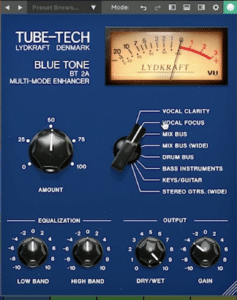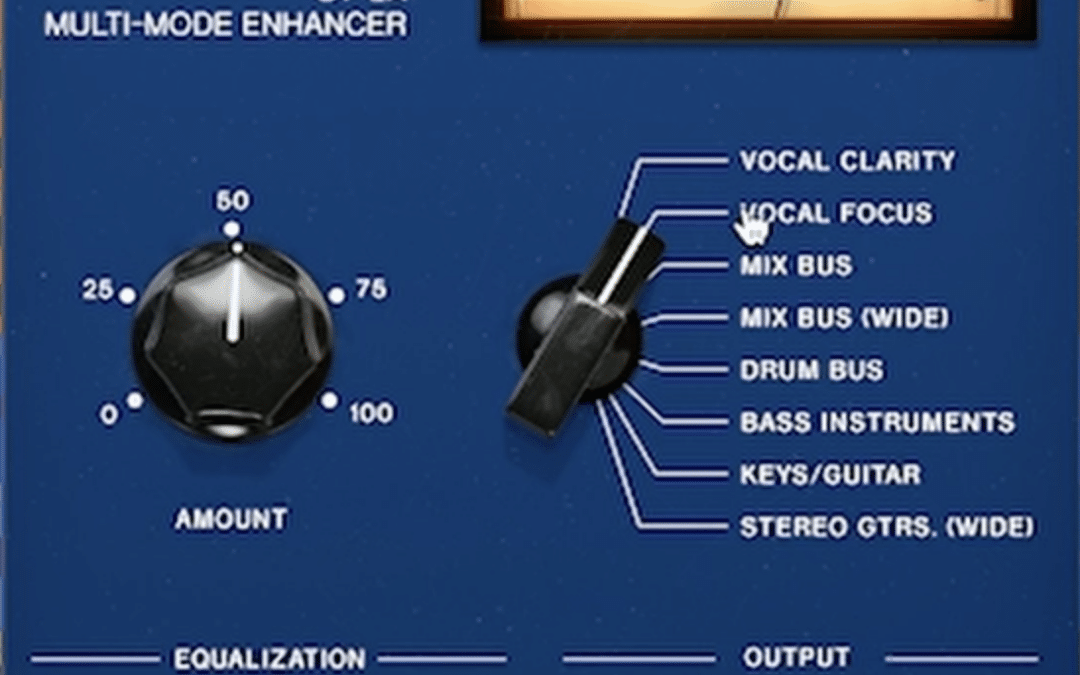Mastering Your Mix with Softube’s Tube-Tech Blue Tone Plugin
I’ve had the opportunity to work with a plethora of tools designed to enhance audio production. One such tool that has recently caught my attention is the Softube Tube-Tech Blue Tone plugin. In this guide, I’ll delve into the intricacies of this plugin, sharing my insights and experiences to help you make the most of it in your mixing and mastering endeavors. Also, make sure to check out the full video review to hear it in action!
Introduction to the Softube Tube-Tech Blue Tone Plugin
The Softube Tube-Tech Blue Tone plugin is a remarkable tool that combines the prowess of multiband compression with the finesse of equalization, all wrapped in a user-friendly interface. Designed to simplify the complex process of audio mixing, this plugin is a godsend for both novice and seasoned audio engineers. It’s a testament to Softube’s commitment to quality, embodying the essence of the renowned Tube-Tech sound.
Key Features of Blue Tone
1. The Power of the Amount Knob
The Amount knob is the heart of the Blue Tone plugin. It’s a macro control that adjusts several parameters simultaneously, including the compression amount on each band, along with their respective ratios, attack, and release times. This knob is not just a simple dial; it’s a gateway to a world of sonic possibilities. At its default 50% setting, it finds a sweet spot, offering a balanced blend of compression and equalization. However, the real magic happens when you start to tweak this knob, pushing it beyond its limits or dialing it back, depending on the needs of your mix.
2. Mode Selection: A Palette of Sonic Colors
The Blue Tone plugin offers eight distinct modes, each meticulously designed for specific sound sources:
- Vocal Clarify: This mode is a boon for vocal tracks, offering low-end control, enhanced articulation, subtle de-essing, and equalization tweaks to cut through the mix.
- Vocal Focus: Tailored for vocals that demand presence, this mode employs hard compression with high ratios, coupled with de-essing and mid-presence EQ.
- Mix Bus: Ideal for adding punch to your mix, this mode smoothens the lows and highs while enhancing the mid-range.
- Mix Bus Wide: It expands your mix, offering a wider soundstage and a cleaner mid-range.
- Drum Bus: Perfect for drum tracks, adding glue, reducing boxiness, and enhancing mid-range punch.
- Bass Instruments: This mode enriches the low-end, making it sound luxurious, while also clarifying the mid-range.
- Keys/Guitar: Adds presence and cohesion to keyboards and guitars, whether acoustic or electric.
- Stereo Guitars Wide: Specifically designed for hard-panned guitar tracks, enhancing their width and clarity.
3. Low and High Band Controls: Sculpting Your Sound
After compression, the Low and High Band knobs allow for up to 6dB of cut or boost in their respective frequency ranges. The cutoff points of these bands are intelligently determined by the selected mode, ensuring that any adjustments made are harmonically and musically relevant.
4. Dry/Wet and Gain Controls: The Finishing Touches
The Dry/Wet knob is crucial for parallel processing, allowing you to blend the processed (Wet) and unprocessed (Dry) signals to achieve the perfect balance. The Gain knob, on the other hand, controls the final output, ensuring your track sits perfectly in the mix.
Practical Applications and Tips
1. Ease of Use: A Plugin for All
One of the standout features of the Blue Tone plugin is its ease of use. Whether you’re a beginner or a seasoned pro, this plugin offers a straightforward approach to achieving professional-sounding results. Start by selecting a mode that seems to fit your sound source and tweak from there. The intuitive design ensures that you really can’t go wrong.
2. Mode Utilization: Finding the Perfect Fit
Each mode in the Blue Tone plugin has its unique character and application. For instance, the vocal modes are specifically designed to enhance vocal tracks, while the Mix Bus modes can be effectively used on drum buses or other instrument groups. It’s all about experimenting and finding what works best for your track.
3. Parallel Processing with Blue Tone: Blending for Perfection
Parallel processing is a technique where you blend the processed and unprocessed signals. The Dry/Wet knob in Blue Tone is perfect for this. By adjusting this knob, you can retain the natural dynamics of the Dry signal while introducing the richness and fullness of the Wet signal. This technique is particularly useful for maintaining transients while adding depth and character to your mix.

Demonstrations and Use Cases
1. Instrument-Specific Applications
In my experience, the Blue Tone plugin shines across a variety of instruments, each benefiting uniquely from its features:
- Drums: When applied to drum tracks, especially on the drum bus setting, it adds a cohesive quality, enhancing the overall punch and reducing any boxiness. The snare, in particular, gains a noticeable presence, making the entire drum kit come alive in the mix.
- Bass: For bass instruments, Blue Tone evens out the low end, imparting a rich and luxurious texture. It also adds a subtle clarity to the mid-range, making the bass lines more articulate.
- Guitars: Whether it’s an acoustic strum or an electric riff, the plugin adds a layer of glue and presence, making the guitar tracks stand out without overpowering the mix.
- Vocals: The vocal modes, Vocal Clarify and Vocal Focus, are particularly impressive. They offer distinct choices between a brighter, more articulate sound and a more compressed, presence-focused tone.
2. Mixing and Mastering Examples
In the realm of mixing and mastering, the Blue Tone plugin serves as a versatile tool. For instance, on a vocal track, starting with the Vocal Clarify mode can instantly lift the vocals, making them more prominent in the mix. Switching to Vocal Focus can then add the necessary compression and mid-presence, especially useful in dense mixes.
In another scenario, applying the Mix Bus Wide mode on the master track can open up the mix, giving it a spacious and polished feel. This mode is particularly effective in genres where a wide soundstage is desirable, like in ambient or orchestral compositions.
Conclusion: The Versatility and Effectiveness of Blue Tone
In conclusion, the Softube Tube-Tech Blue Tone plugin is not just another tool in the audio engineer’s arsenal; it’s a game-changer. Its ability to adapt to various instruments and mix scenarios makes it an invaluable asset for both mixing and mastering. Whether you’re looking to add clarity to vocals, punch to drums, or richness to bass, Blue Tone has a mode that fits the bill. Its user-friendly interface, combined with its depth of control, makes it suitable for beginners and seasoned professionals.
From my personal experience, the true strength of Blue Tone lies in its ability to enhance a mix without overshadowing the original character of the music. It’s a testament to Softube’s commitment to quality and its understanding of what audio professionals need in a plugin. Whether you’re working on a small project in a home studio or a large-scale production, Blue Tone can elevate your audio to a professional standard.






